Learn how to make authentic Bavarian cream – one of the quintessential German desserts.
Go straight to the Recipe Card or
Read on for useful information, step by step pictures and relevant tips (3 mins).
We encourage you to watch the brief video demonstration to become more familiar with the process of making Bavarian cream.
What is a Bavarian Cream?
Bavarian cream is a custard – a mixture of milk, eggs and sugar, thickened with gelatin and lightened up with whipped cream.
It is a classic German dessert, known as crème bavaroise in French and Bayerische creme in German. Its origins are French, it was a French high-cuisine chef, Marie Antoine Carême, who first recorded its recipe in the early nineteenth century. It is believed that the dessert had been a favorite at the French royal court for much longer, since the fifteenth century when Isabeau of Bavaria was Queen of France by marriage to Charles VI.
Its name is thought to have been a nod to Isabeu and her House of Wittelsbach, rulers of Bavaria. The dessert became immensely popular in Bavaria and all of Germany.
Bavarian cream is either served chilled as a stand alone dessert or used in various pastries, cakes and other baked goods (spread or as a filling piped from a pastry bag).
As a stand alone dessert Bavarian cream can be:
- presented in an appropriate individual dish or glass (see picture above).
- poured into a mold and then served unmolded, on a dessert plate (below).
Ingredients for This Bavarian Cream Recipe
Eggs. While there are some versions of Bavarian cream where whole eggs are used in combination with yolks only, most commonly just egg yolks are called for and this recipe makes no exception.
Sugar. Use white cane sugar for best results.
Gelatin. Gelatin allows the custard to assume and retain the shape of a mold once it sets. It also contributes to the silky, smooth texture of the dessert. You can use sheets, powder or granules. Dissolve it in cold water first (aka bloom the gelatin). Gelatin conversion (from type to type) is a finicky business at best. Different brands have different qualities, I’ve organized conversion information in the Notes section of the Recipe Card.
Milk. Use whole milk.
Vanilla. Use an actual vanilla bean if you can find some – simply cut one open lengthwise, scrape inside with tip of knife and add it to the milk instead of vanilla extract.
Heavy cream/whipping cream. To whip and fold into the base custard. It gives nice substance and richness to the cream, while it also lightens up the texture.
Fruit. Optional – berries and peaches are most commonly used as a topping, sometimes they are cooked down with sugar in a pan and then both the fruit and syrup it releases are used.
Finishing sweetening agent. Optional – powdered sugar, honey, fruit syrup/sauce or chocolate sauce.
Garnishes. Optional – fresh herbs such as mint, basil, thyme are complementary to fruit toppings.
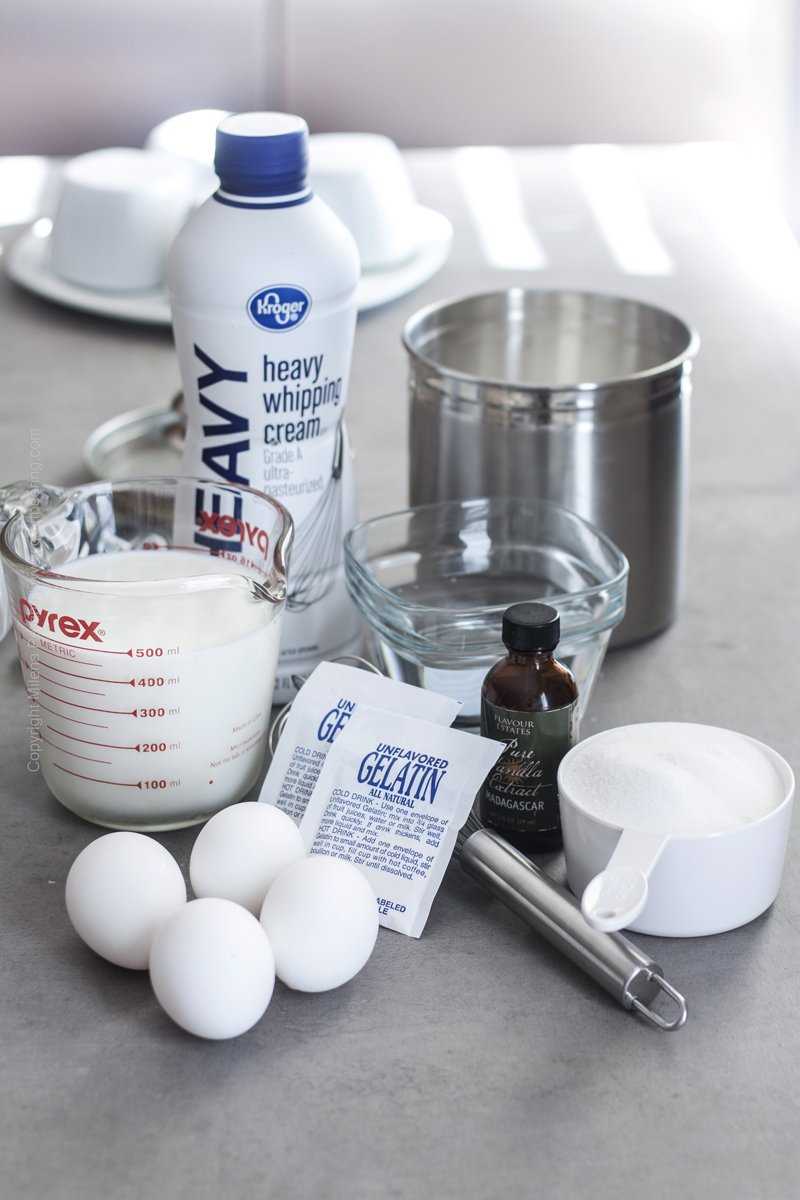
These few simple ingredients are all you need to make a decadent Bavarian cream.
How to Make Bavarian Cream (Step-by-Step Instructions)
There are a few stages in the process – none of which complicated.
As an overview – you will make an egg custard with warm milk to which you will add bloomed gelatin so it can melt nicely. Finally, once the egg yolk mixture has cooled down you will fold in whipped cream and transfer to molds or serving glasses.
Step 1. Whisk eggs yolks with sugar until foamy.
Step 2. In a small bowl of cold water sprinkle powdered gelatin and let bloom (or place gelatin sheets in cold water and let soak).
Step 3. In a saucepan add vanilla to milk and bring to a gentle boil. Then stir to combine the whisked eggs and sugar with the milk.
The traditional high-cuisine method involves a double boiler, but a simpler way is to temper the beaten egg yolks and then whisk them into the milk.
Temper by adding a ladleful of the heated milk to the egg mixture, whisk to combine the two (see image sequence above) and then slowly pour the tempered eggs into the milk (see below).
Step 4. Add the bloomed gelatin mixture into the custard while it is still warm. This will ensure that it melts into it and when it eventually begins to set there will not be any clumps, just a silky smooth texture.
Step 5. Whip cream while the gelatin custard is cooling down (you can use the whisk attachment and bowl of a stand mixer). Fold in the whipped cream into room temperature custard, then transfer to molds (see “stickiness” tips below), cover with plastic and refrigerate.
Let the Bavarian cream set for at least 6-8 hours. For best results let it set overnight or even a bit longer. Note that a smaller mold or dish will set faster than a larger one. If you poured the cream into a pie crust, definitely let it set overnight or longer.
How to Unmold Bavarian Cream
Releasing Bavarian cream from its mold is particularly easy if you use silicone molds.
But if you (like me) simply make use of ramekins or a different ceramic or metal mold you might face a few “stickiness” challenges.
There are two ways to address them.
- You can spray (minimally) the ceramic molds with cooking oil before you fill them (or simply brush the entire insides with cooking oil).
- After the cream has set, you can fill a baking pan with warm water, place the molds in it and wait until the gelatin loosens and the Bavarian cream is naturally released.
Either way, before you unmold gently run a thin, sharp knife along the periphery of the mold to help things along (see pictures below or watch video).
NOTE: Do not leave the molds in the warm water for too long. If you do, more of the gelatin will liquefy and the Bavarian cream will begin to lose its set structure. The exact time depends on how many molds you have submerged in the warm water at once, but overall 30-45 seconds per mold should be enough to release cream with firm texture. Longer times will result in softer texture and some degree of liquification, see pics below.
Despite the above advice my favorite way to enjoy Bavarian cream is when it has a soft to very soft texture, but this is in part due my aversion to wobbly foods, regardless of flavor (huge NO to aspic and dessert jellies). Chris on the other hand is definitely a fan of the firmer texture, so I usually unmold both firmer and softer versions.
You can easily manipulate the degree of firmness and make every one you serve Bavarian cream to happy. Just leave the molds in the warm water for a shorter or longer time as needed.
If you want a really firm and stable cream – consider increasing the quantity of gelatin by about a third, from the get go, as noted in the Notes section of the Recipe Card.
What Color is Bavarian Cream Supposed to Be?
Bavarian cream can range in color from barely off-white to intense ivory.
The color depends on the yolks used – some have very intense orange color pigments while others are distinctly yellow. The color of the yolks depends on the diet of the hen that laid the eggs. For example birds fed mashes with wheat and barley tend to lay eggs with lighter color.
When fruit syrup or other colored flavoring agents are added to Bavarian cream it obviously takes on the color of their respective pigments – brown from chocolate, rich pink from raspberry syrup etc.
Flavored Bavarian Cream
Flavored versions of Bavarian cream are very popular in Germany. The most popular flavor infusions are chocolate and fresh berries. Various syrups, reductions, and fruit puree are added to the milk during the stage when it is combined with the gelatin.
Certain fruits do not belong in it as they contain enzymes that will prevent the gelatin from setting. To that end avoid pineapple and papaya.
Bavarian Cream Donuts & Other Uses
The popular Bavarian cream donuts sold in America are actually filled with a pastry cream (crème pâtissière) and not Bavarian cream (crème bavaroise). Pastry cream, such as Boston cream, uses cornstarch, a thickening agent, and does not have a firm structure like Bavarian cream, it is also more forgiving to higher temperatures.
That being said, no one is stopping you from piping nicely set, chilled Bavarian cream into donuts. Just make sure that you keep them chilled once you fill them. Or you can spoon some into the middles of actual Bavarian donuts.
You can also pipe Bavarian cream filling in cream puffs, eclairs, use it as cake filling, in between cake layers, cream filling for pies, create layered desserts – it is up to your imagination really. Simply transfer Bavarian cream to a piping bag with an appropriate tip and get to work.
NOTE: If you are going to make Bavarian cream exclusively for the purpose of using it in a cake etc. recipe, add about a third more gelatin than called for, then chill the final mixture a bit before you use it in a cake etc.
Find more German Desserts.
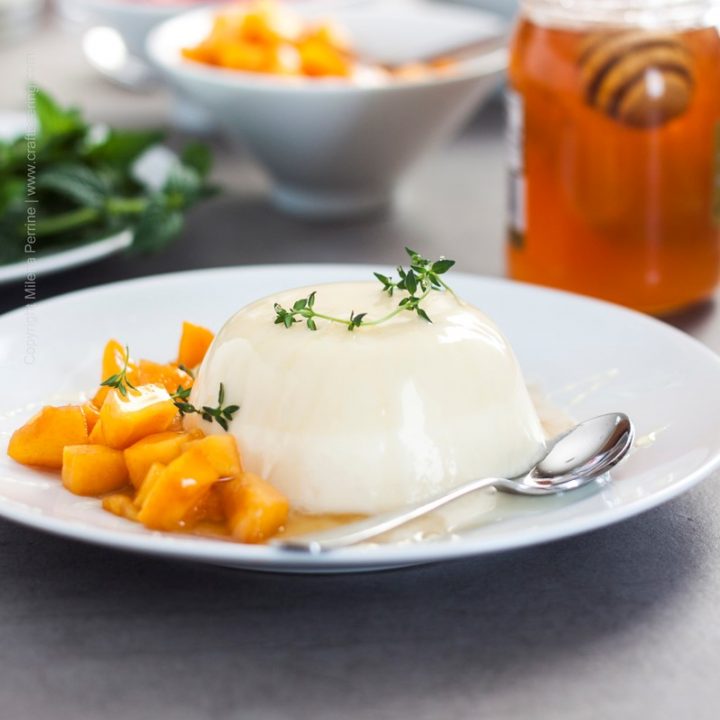
Authentic Bavarian Cream (Recipe, Tips & Video Tutorial)
Authentic Bavarian cream recipe you can easily master. Serve the classic German dessert chilled or add it to a variety of pastries and cakes. Allow plenty of time for the cream to set, refrigerated.
Ingredients
- 4 egg yolks
- 1 cup white cane sugar
- 2 envelopes unflavored gelatin (plus 1/2 cup cold water to bloom it)
- 2 cups whole milk
- 2 tsp vanilla extract (or 1-2 vanilla beans)
- 2 cups heavy whipping cream
- fresh fruit and herbs, as needed to top dessert (optional)
- powdered sugar, honey, agave syrup, fruit syrup or reduction, as needed, to drizzle over dessert (optional)
Instructions
- Whisk the egg yolks with the sugar until foamy. Set aside.
- Sprinkle the gelatin over cold water and set it aside to bloom.*
- Add vanilla to milk. Over medium heat in a deep sauce pan bring milk to gentle boil.
- Turn the heat to low and add a ladelful of milk to the yolks mixture, stirring to blend. This is called tempering. The milk dilutes the egg yolks and prevents their proteins from forming bonds and the yolks cooking.
- Add the tempered egg yolks mixture to the milk, while heat is still on low. Whisk as you do it. Continue whisking gently for a couple of more minutes and remove from the heat.
- Add the bloomed gelatin to the warm custard and whisk to help it melt nicely. Transfer the resulting mixture to a mixing bowl and set it aside to cool down.
- While it is cooling down, prepare molds or dessert glasses etc. and whip the cream.
- Fold in the whipped cream into the cooled down custard. Transfer to molds, cover and refrigerate to set. Let set for a minimum of 6-8 hour, for best results leave it overnight or even a bit longer. Smaller servings will set faster.
- Serve unmolded** or directly from the dessert cup in which the Bavarian cream set and top with fruit, fruity syrup, Chocolate sauce honey, fresh herbs etc.
Notes
*If your singular goal is to pipe Bavarian cream into a pastry like cream puffs or donuts, consider increasing the noted gelatin amount by about a third. The cream will have a much firmer texture and lend itself easily to being piped out of a pastry bag. Keep desserts to which it is added chilled for best results.
Gelatin conversions:
1 packet of granulated gelatin = 1 tbsp powdered gelatin = 3 to 5 sheets of gelatin
Water quantities (for this recipe):
If using granulated/powder gelatin sprinkle over 1/2 cup cold water.
If using sheets, place in plenty of cold water and squeeze out the water from the bloomed sheets before adding them to the warm custard.
**Refer to the tips in the post body about How to Unmold Bavarian Cream.
If you want to freeze Bavarian cream do it in an appropriate mold (silicone works well) and before it has set. Thaw in the fridge first (overnight) and then at room temperature before you unmold/serve.
Do not microwave Bavarian cream (or any dessert that contains gelatin). Certain amino acids in gelatin may change into toxic substances when microwaved (read study).
Nutrition Information:
Yield: 10 Serving Size: 1Amount Per Serving: Calories: 298Total Fat: 21gSaturated Fat: 13gTrans Fat: 1gUnsaturated Fat: 7gCholesterol: 132mgSodium: 40mgCarbohydrates: 24gFiber: 0gSugar: 24gProtein: 5g

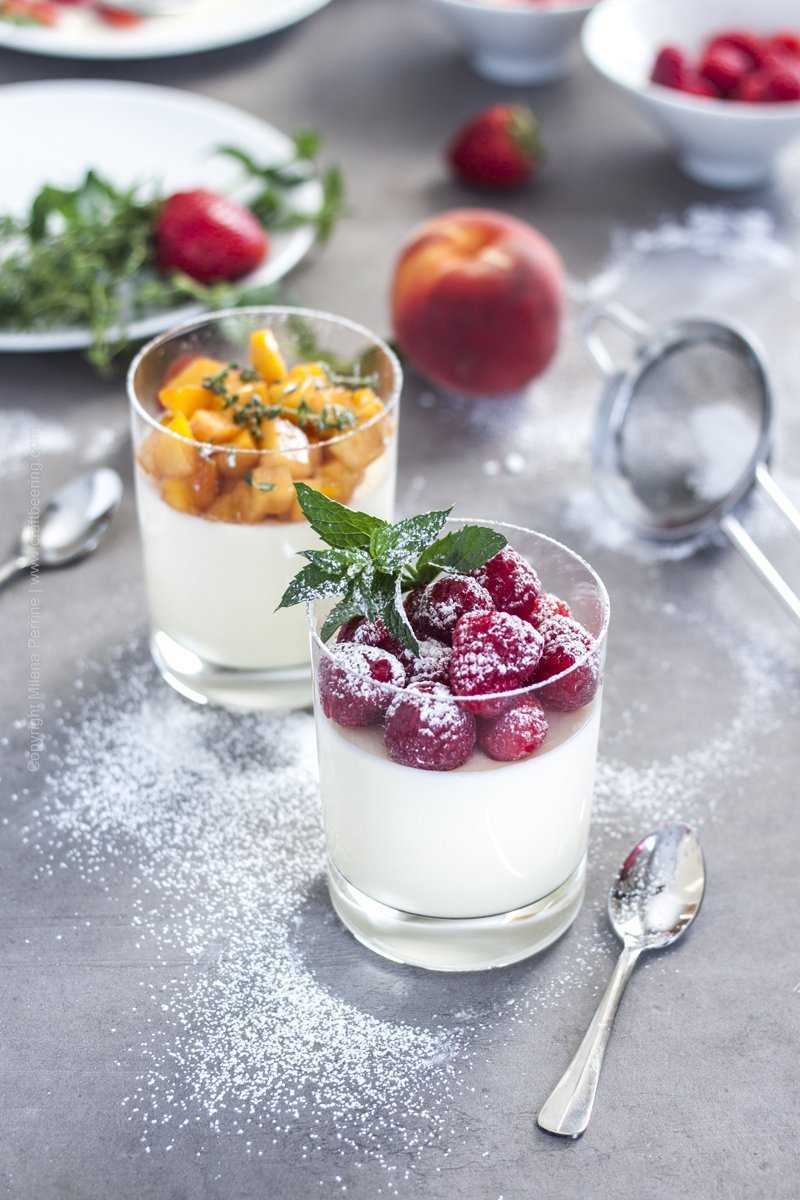
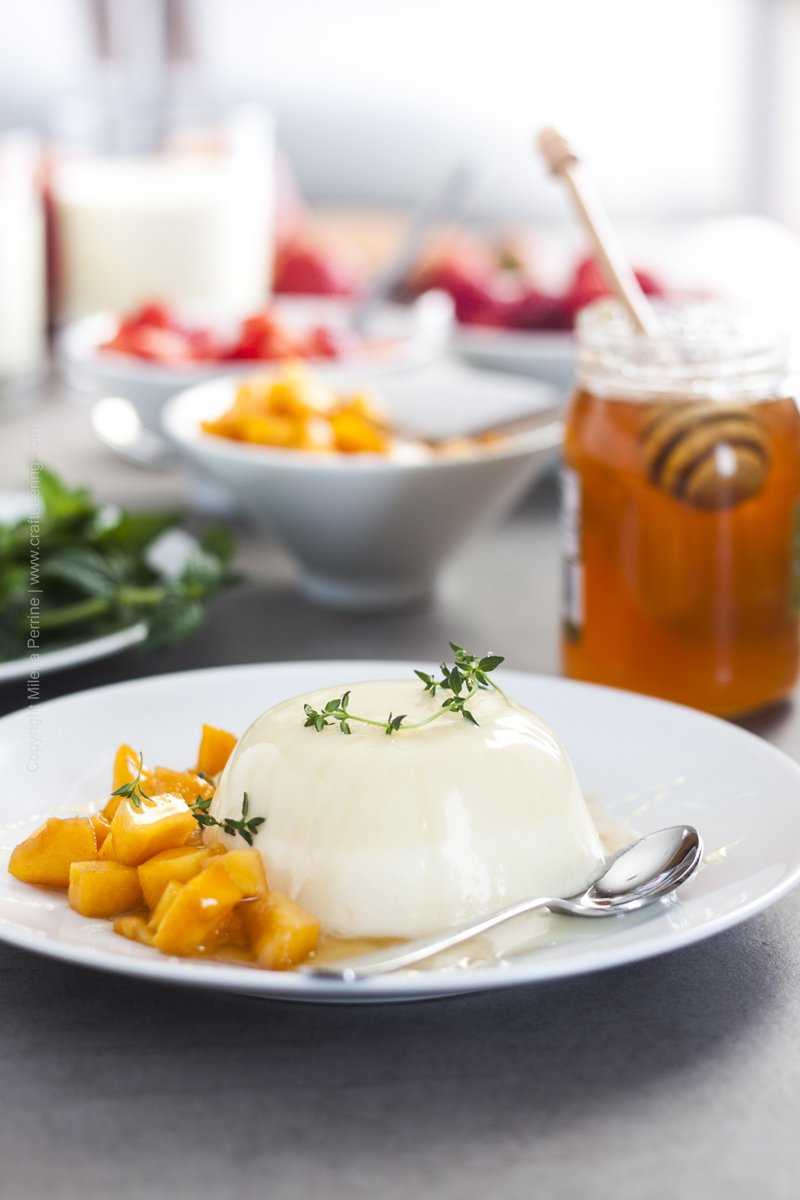


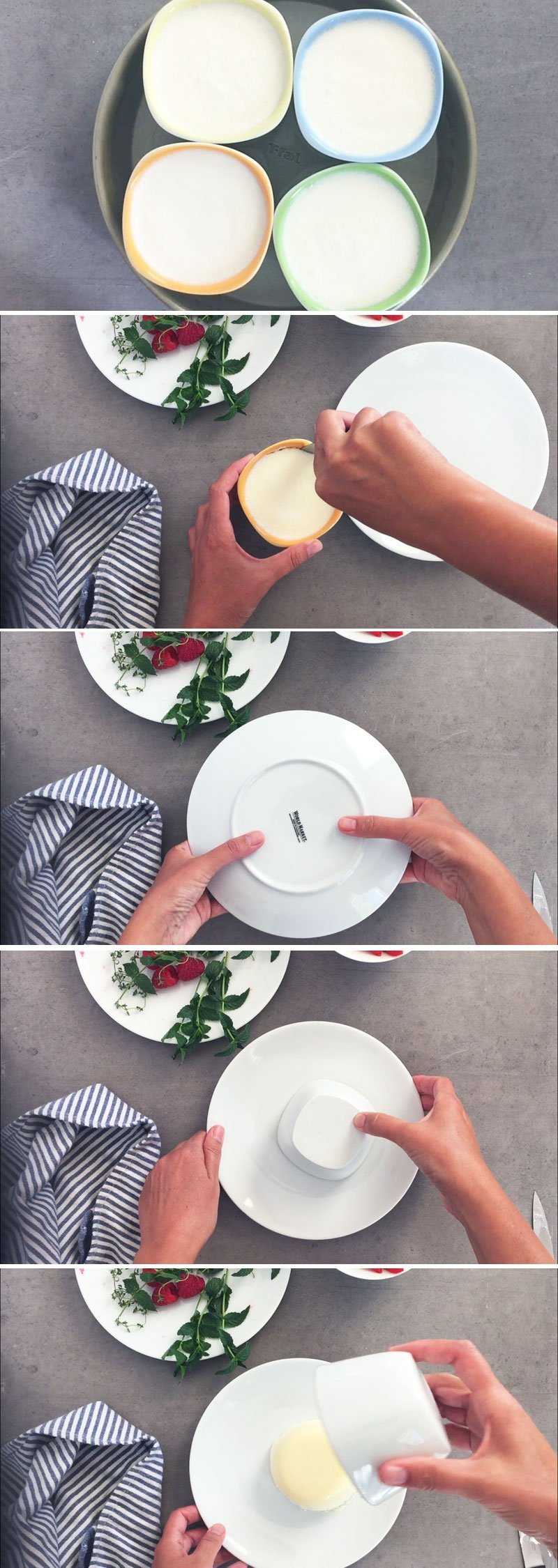

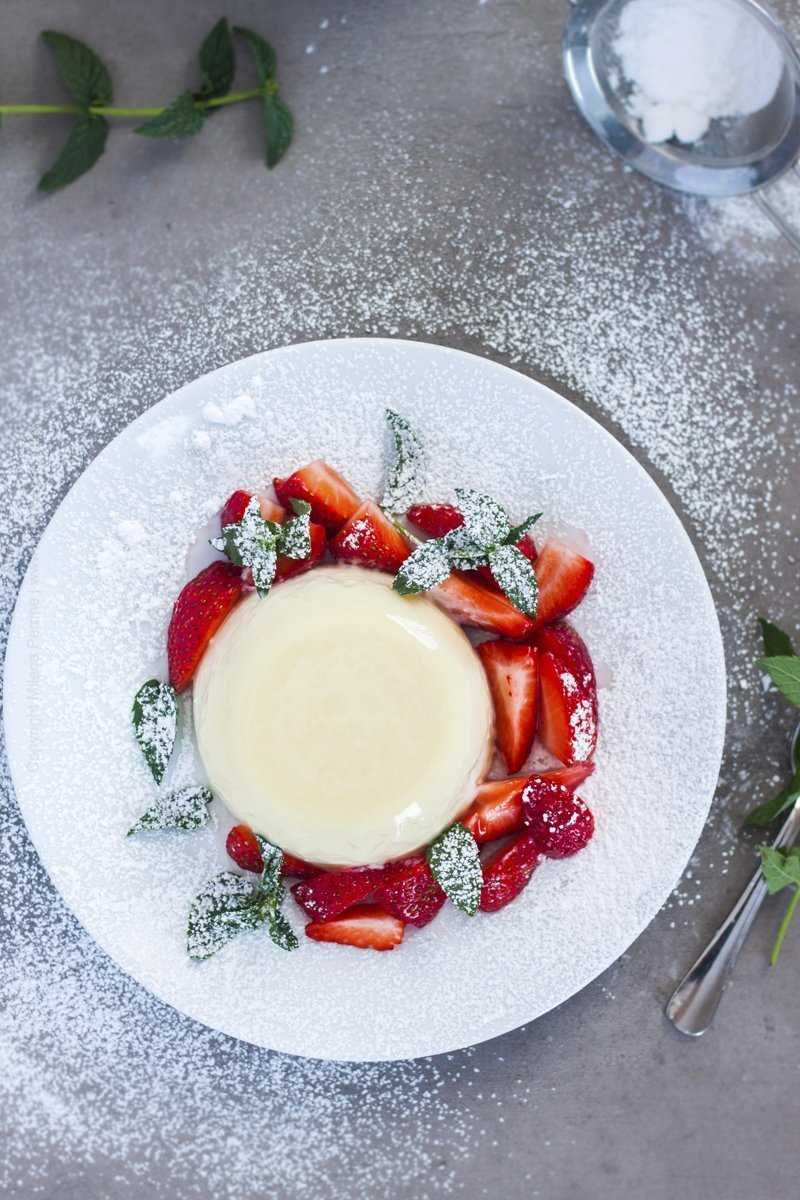
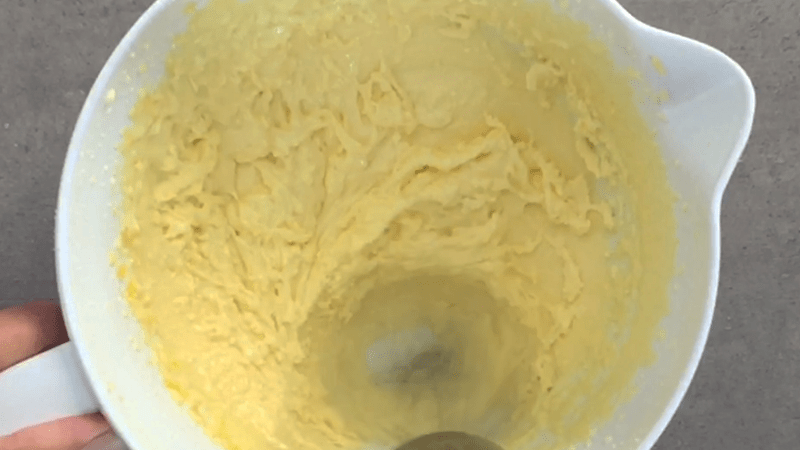
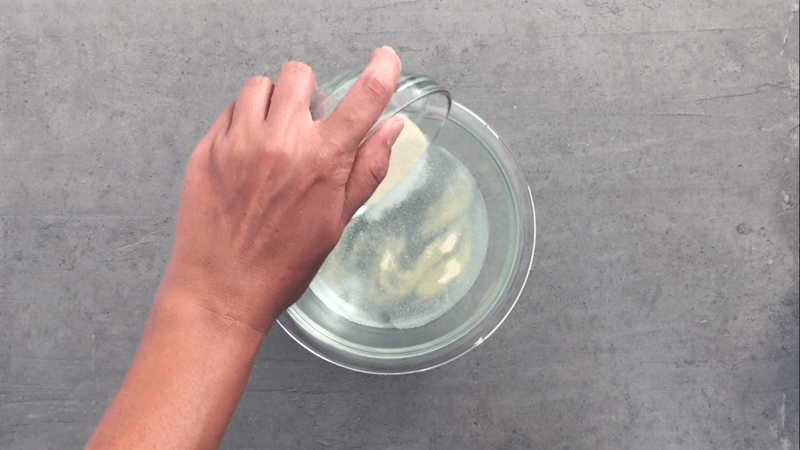
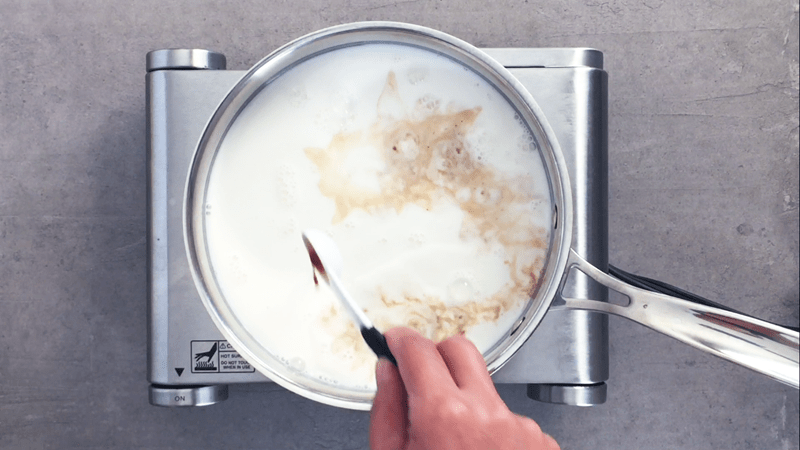
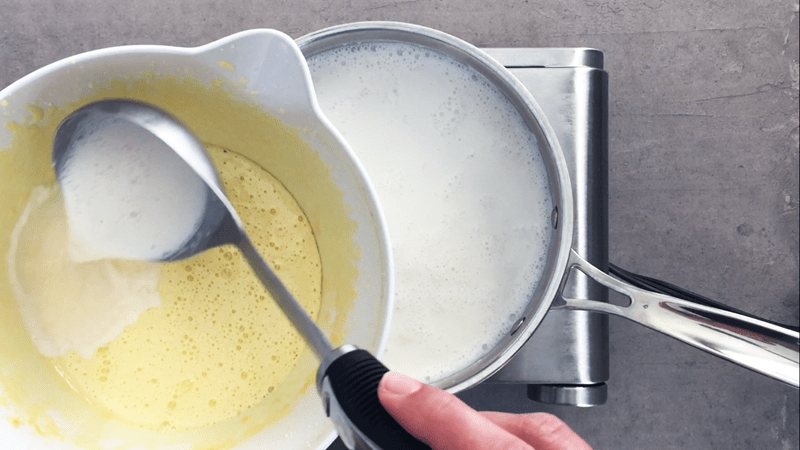
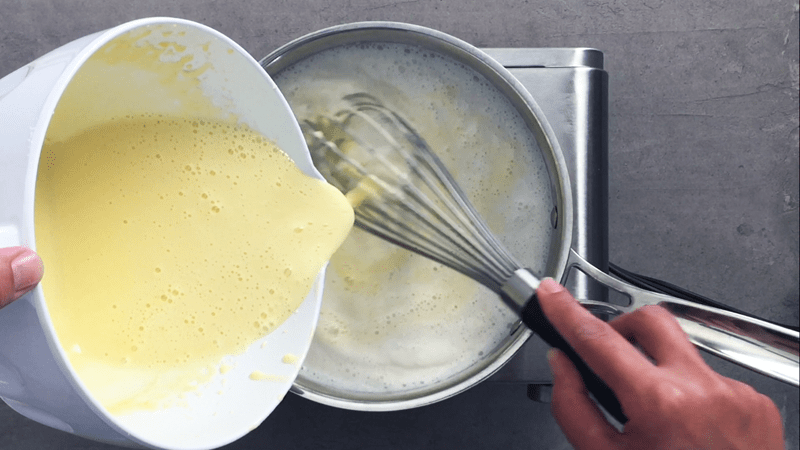
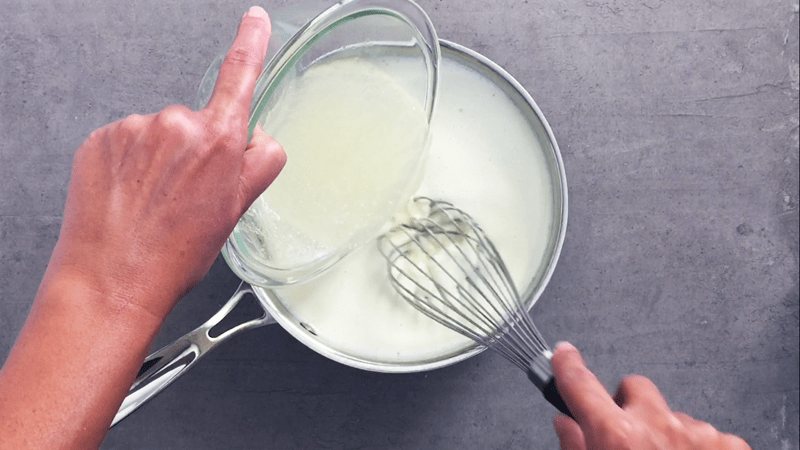
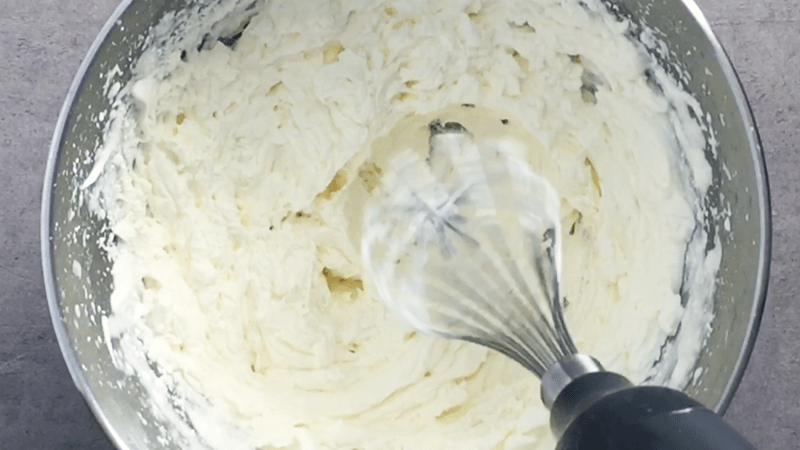
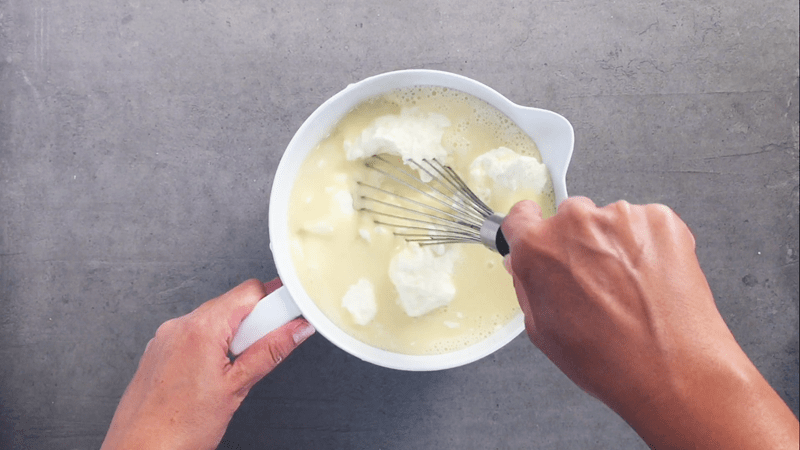
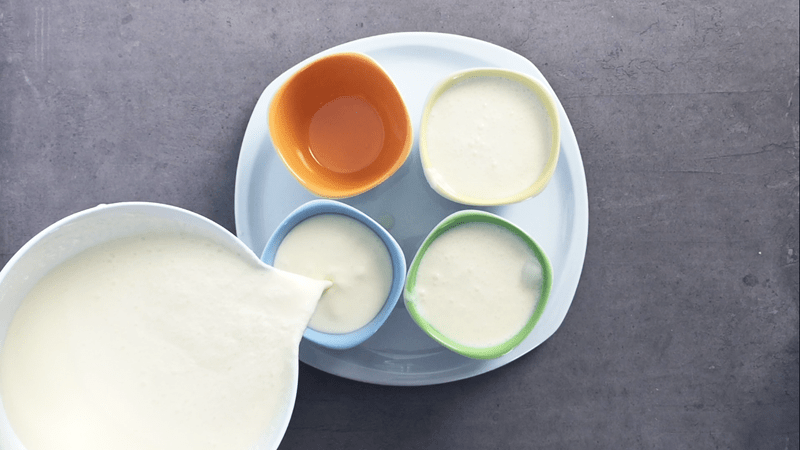
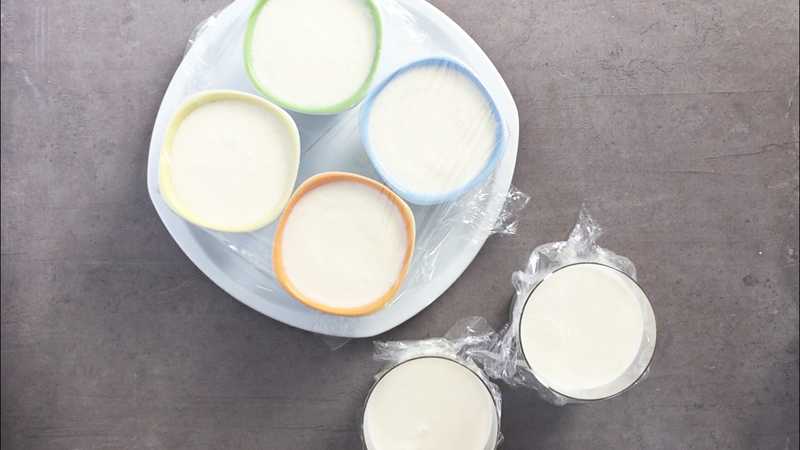
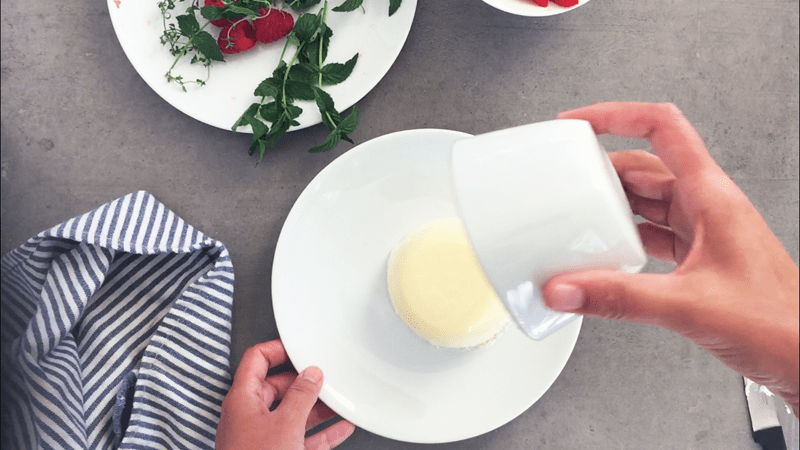
Lyndsay Gromoll says
If I were to make a peppermint bavarian cream, would you add peppermint extract in substitution for the vanilla or in addition to?
Milena Perrine says
Lyndsay, you can use both if you wish or only the peppermint extract and leave out the vanilla. Vanilla rounds off the edges of the peppermint extract and mellows down the menthol. Depends on how strong you want to taste the peppermint.
Lupita says
Thank you for the recipe and video. I want to use this as a filling in a cake. How would I go about it. It looks to me like it’s a jello desert and not filling. Should I pipe before it sets completely in the fridge?🤔Please help. This looks delicious.
Craft Beering says
Lupita, you will need to add more gelatin to the recipe and chill the cream some before using it so that the consistency is that of a flour thickened custard (like for eclairs). Then it should not be a problem to transfer it to a piping bag or simply slather it over the layer of cake. You do not have to wait for it to set completely, only until the consistency is such that you can work with it.
Katie says
Is the custard mix supposed to still be liquid when I fold in the whipped cream? If so, how do I thoroughly fold in the whipped cream? Last time I made it, the whipped cream just made a layer on top of the custard as it set.
Milena Perrine says
Katie, yes, the custard mix should be liquid and only be cooled down. Essentially you need to fold in the whipped cream before the gelatin begins to set. In that way the gelatin will penetrate the whipped cream as well and bind everything together, there will be no separation of the cream. Hope this helps.
Jane McCarty says
What happens if I try a keto version by using monkfruit sweetening or stevia for the sugar? Will the custard even form?
CraftBeering says
Jane, I have never personally made it with either one of these sugar substitutes, but I know that stevia is commonly used in egg custards.
Gabbie21 says
The only way to know is to take a chance and try it yourself Jane
Leslie says
Have you ever made this recipe as a lemon Bavarian cream? If so, what did you do differently or what would you do differently? Thank you!
CraftBeering says
Leslie, the easiest way to go is to use store bought lemon flavored gelatin and stay with the recipe. Alternatively you could bloom regular gelatin in 1/4 cup freshly squeezed lemon juice plus 1/4 cup water instead of 1/2 cup water. If you had any preserved lemons you could rinse them really well from the salt (1 large preserved lemon should do or 2 small) and mince really small, then add into the heavy cream before you whip it. They have such powerful lemon essence and no bitternes or sourness.
Tiffany says
I’m looking into making a chocolate version to put in a puff pastry and I was wondering how much, what kind of chocolate and at which stage would you add it.
CraftBeering says
Tiffany, I would add a few teaspoons (start with 2 and add to taste) of good quality cocoa powder at the very beginning when whisking the egg yolks and sugar. The chocolate flavor will be nicely incorporated and you can proceed with the recipe.
Valerie Stonerock says
I made this and used 3 envelopes of gelatin as my plan was to put it in my homemade donuts. It was too thin before chilled and too thick afterwards. Mine also separated but it was very yummy! Especially with fresh strawberries.
cary scott says
Tried the recipe, everything looked right, after chilling all day in the fridge, when I took it out of the bowl to spread, it had seperated into 2 layers, the custard on the bottom and the whipped cream on the top. Tasted great though.
CraftBeering says
Cary, thank you for your comment. My guess is that there was an issue with the gelatin, sounds like there wasn’t enough of it in the custard (gelatin is very finicky and different brands vary in ‘strength’) or that the whipped cream was not entirely folded into the custard or maybe a combination of both.
Sythel’ says
Trying to plan a 30th birthday party for my grandson (10/20/89) who loves the Craft Beers & Oktoberfest! Also loves donuts!! Thanks for all the fantastic authentic recipes!!
Jennifer @ Seasons and Suppers says
I don’t believe I’ve ever had the pleasure of enjoying Bavarian Cream, but I can tell already that it’s something I am sure to love 🙂 And loving all your tips and tricks, too. Putting this one on my cooking list!
CraftBeering says
Definitely try it! It is so light and delicate in both texture and flavor:) Thank you for stopping by!
Katherine | Love In My Oven says
I’ve never made bavarian cream, so the video is SUPER helpful. Great work! Your photos are gorgeous too 😉 This looks soooo decadent and delicious!!
CraftBeering says
Thank you, Katherine! I am glad that the video helps, it really is an easy process:)
Leanne says
Okay, first, I just love how thorough your recipe posts are! The attention to detail in instructions and photos is so helpful, especially for someone who has never made bavarian cream, like me! Two, these would make such a lovely dessert for an elegant dinner party. I don’t often throw those, but now I’m feeling inspired! 😉
CraftBeering says
Thank you, Leanne! So kind of you to note, glad to be of help to others with a sweet tooth:)
Kelsie | the itsy-bitsy kitchen says
I always assumed Bavarian cream is German. That’s so interesting that it’s French! And now I’m craving a layer cake filled with Bavarian cream so expect that to pop up on the blog at some point 🙂
CraftBeering says
Right? The French and their many custards, lol. Looking forward to that cake:)